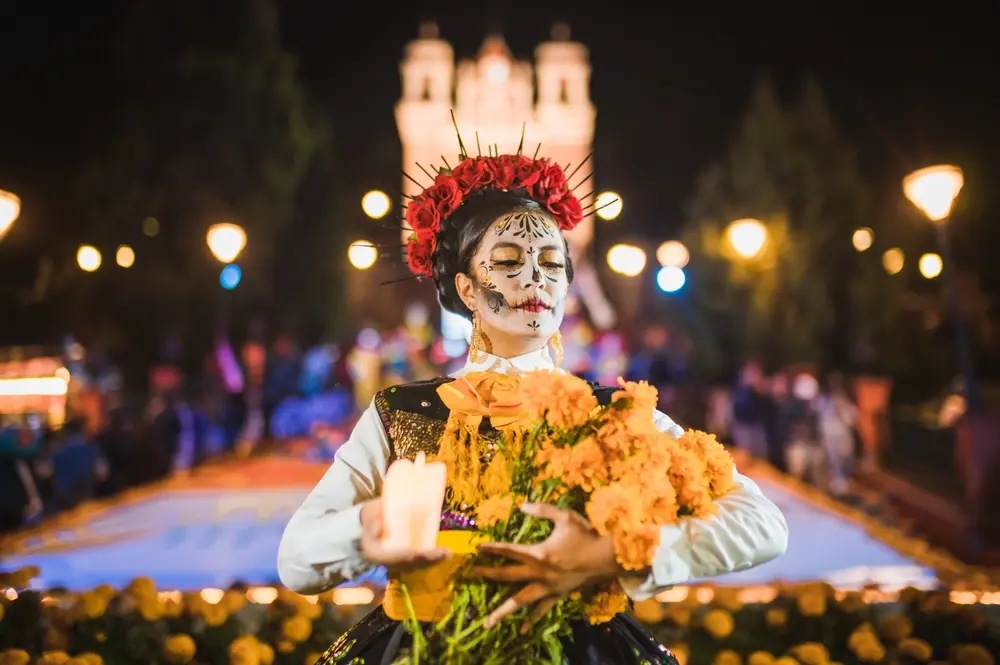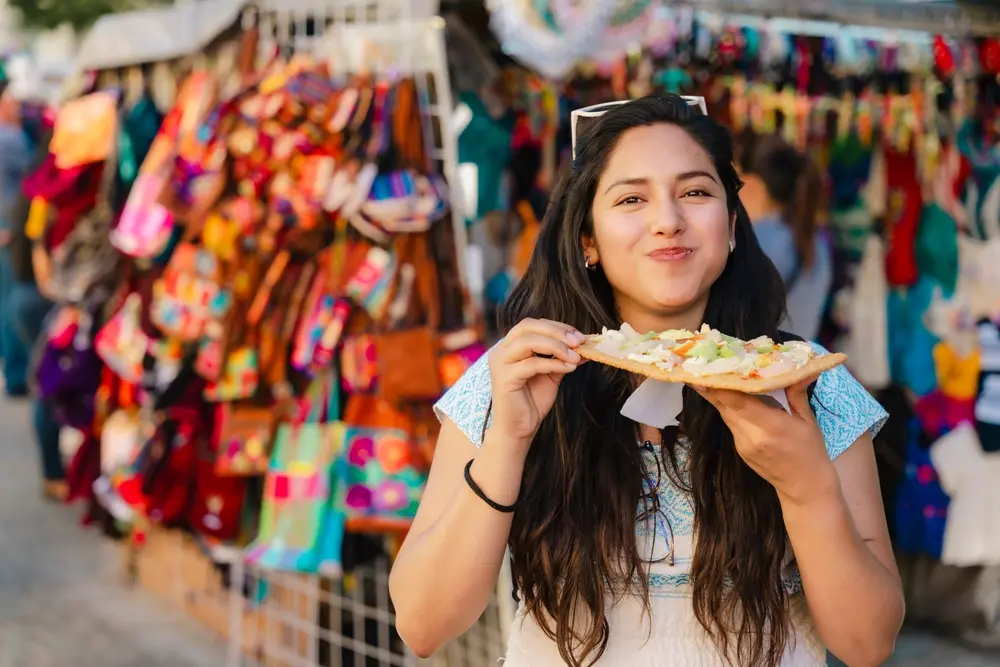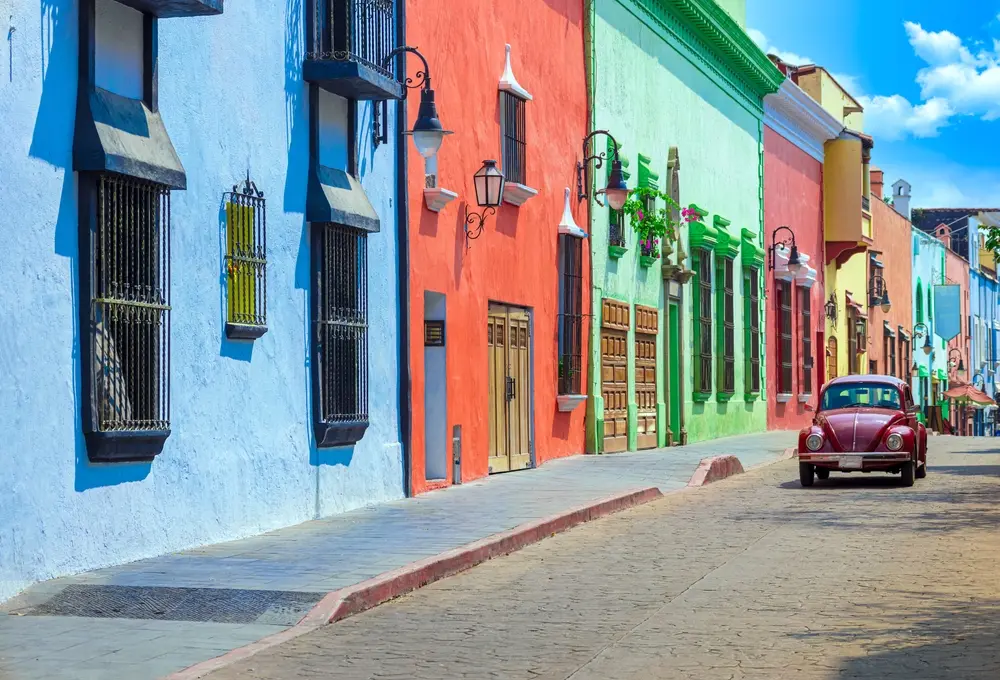Over 40 million people visit Mexico every year. Whether they’re drawn to the white sand beaches, crystal blue water or rich cultural experiences, the majority of people leave with wonderful memories and souvenirs for their family and friends.
With thousands of miles of coastlines, you’ll find a vast array of water sports. From snorkelling around Caribbean coral to cruises to cocktails at beach bars, you’ll undoubtedly spend some of your holiday in or around the water. It’s up to you how you spend the rest – in Mexico you can explore ancient ruins in the morning and hot air balloon at night, and wander around nature reserves in between.
But how safe is Mexico, and how can you best protect yourself while you travel?
Is Mexico safe for tourists?

You should always check the Foreign Office’s travel advice before booking your trip. You can read about which areas are unsafe and give you advice to avoid trouble.
The Mexican government makes efforts to protect major tourist destinations, including:
- Cancun
- Tulum
- Cozumel
- Los Cabos
- Nuevo Vallarta
- Playa del Carmen
- Puerto Vallarta
Tourists are advised to take precautions, even in and around resorts and tourist areas. We’ve put together some tips for you to have an enjoyable safe holiday. And if you do run into any trouble, remember that our Mexico travel insurance policies cover your emergency medical expenses, emergency flights back home and legal fees if you need support while you travel.
Mexico safety: At night
Even in tourist areas you’re advised to be careful, especially at night.
Safety advice for Mexico at night:
- Only travel during daylight hours
- If you’re out at night, let staff at your hotel know where you’re going and when you expect to return.
- Arrange private transport and only travel on busy routes and main roads.
- Don’t use ATMs or money-exchange places when it’s dark – criminals often target tourists in these areas.
- If visiting bars, pubs and clubs be vigilant. Tourists can be targets for robbery, sexual assault and even kidnapping.
You’re safest on your resort and when in bright, well-lit places as a group. And there is a lot you can do safely. Many of Mexico’s museums host late night events, there are a host of fine dining spots for dinner and the resorts and Mexico City have so many bars, clubs and rooftop spots for cocktails you’ll never be able to visit them all in one trip.
Drugs are a frequent cause of crime in Mexico. Tourists are putting themselves at risk if they buy or attempt to buy them. It is best to avoid all drug use while in Mexico.
Mexico safety: Solo female travellers

Is Mexico safe for solo female travellers?
Mexico is generally safe for women, although there is a risk of rape and sexual assault. There have been some high profile attacks on women travellers over the years that attracted international attention.
The foreign office has put together specific guidance on what to do if you are sexually assaulted in Mexico. You can report your assault in Mexico if you feel safe enough, or you can do it when you return to the UK. If you decide to report your assault while you’re still in the country, you should tell the British consulate in Mexico. Consulate staff will help you to liaise with and arrange medical and police assistance.
Tips for female travellers in Mexico
- Stay in tourist resorts. There are women-only hostels in Mexico if you’re thinking of backpacking. Review sites such as TripAdvisor often include reports from other women on what areas felt safe or where to avoid.
- Read blogs by solo women travellers – there are plenty out there, with safety advice and tips for women travelling alone in Mexico. World Nomad, Where Goes Rose and Sixty and Me for women over 60 are just three.
- Protect your drinks and don’t accept drinks or food from strangers.
- Learn some basic Spanish phrases so you can ask for help if you need it.
- Don’t carry too much cash or flashy valuables.
- Always let your hotel or hostel know your itinerary. Tell someone when you expect to be back so people know if you’re missing.
- If you do need help, call the British consulate immediately. You can also call our 24/7 medical emergency line.
Mexico safety: Where to stay and where to go

Staying safe in Mexico City
You can visit the house where Frida Khalo lived and died, eat some of the best churros in Mexico, or just spend your time wandering the artisanal markets and different neighbourhoods.
It can be difficult deciding where to stay because Mexico City is so big and has so many different areas. Hotel chains are often the safest option for travellers, but if you do fancy staying somewhere off the beaten path you should research the neighbourhoods. Central is usually better, but not always.
Risks:
- Pickpocketing and theft is rife. Don’t carry your passport, a lot of cash or high value goods.
- Don’t drink the tap water.
- Stay central, avoid dangerous neighbourhoods and don’t go out walking around after dark.
Staying safe in Cancun
Cancun has a reputation as a party place. It does have fantastic nightlife and is a popular destination for American tourists enjoying ‘Spring Break’, but there’s much more to it than that. There are white sand beaches, beautiful four- and five-star resorts and Mayan ruins to visit.
The crime rate is lower here than in other parts of Mexico. The police and government want to make sure the area stays attractive to tourists, so it is quite safe.
Risks:
- Drink spiking, especially for women. Don’t leave drinks unattended or accept them from strangers.
- Sexual assault, assault and robbery are risks. Don’t wander off alone, stick with your group, and stay alert.
- As it’s a party town, there is drug activity so overdoses and cartel activity are possible.
Staying safe in Tijuana
Tijuana is an area of Mexico that has an international reputation for drugs, trafficking and crime. As a busy city on the border of the US and Mexico, there is a strong cartel presence. The foreign office advises against all but essential travel to Tijuana.
Risks:
- Tijuana has one of the world’s highest homicide rates.
- Crime, such as robbery, assault and sexual assault, are common.
- Drug related problems, including fentanyl, are prevalent.
Staying safe in Playa del Carmen
A huge tourist draw, the sun-soaked Playa del Carmen attracts solo travellers and families because of the low crime rate and beautiful beaches. A lot of the activities focus on the water, with boat tours and cruises particularly popular during tourist seasons.
Risks:
- Tourist scams such as taxis overcharging, aggressive salesmen pressuring tourists on 5th Avenue, and waiters adding high tips to bills. Just stay vigilant, pre-book airport transfers, check your receipts and don’t engage with street vendors.
- Assault, theft and robbery are risks. A lot of places are cash businesses so you’ll often have to get cash out at ATMs which can make you a target for street crime.
- Hurricanes can cause severe disruption and even fatalities so try to travel outside of hurricane season.
Staying safe in Cabo
Another party town particularly popular with tourists looking for a good time and Americans on Spring Break, the crime rate in Cabo is lower than in other parts of Mexico. In fact, it’s one of the safest places in Mexico you can visit.
As with any other town where the nightlife is vibrant and alcohol a major draw, you can have a great trip as long as you protect yourself and stay aware of your surroundings.
Risks:
- Petty theft can be a problem. If you stick to the busy areas, make sure your valuables are secure and don’t flash your cash you should be okay.
- Tourist scams are a problem, as they are in any tourist town. Taxis and street vendors will likely overcharge. Pre book your airport transfers, or better yet arrange transport through your hotel, and don’t engage with street vendors.
- Drink spiking is a risk, especially for women. Protect your drinks and don’t accept them from strangers.
Staying safe in Riviera Maya
Riviera Maya is a beautiful part of Mexico’s Caribbean coastline. It has ancient ruins, caves and beaches. It’s a draw for solo backpackers and a romantic setting for couples. It’s safer than a lot of other areas in Mexico, but not the safest.
Risks:
- Health risks for tourists include mosquito-borne diseases, dehydration and sun stroke. Drink bottled water, apply sunscreen and wear insect repellent.
- Pickpocketing and bag snatching are risks for tourists.
- Assaults and sporadic violence have become more common in recent years. Try to stay in well-travelled areas, book reputable tours and book accommodation close to the beach.
Staying safe in Oaxaca
There are currently no restrictions in place for Oaxaca but we advise regularly checking the Foreign Office for travel advice. Oaxaca is a state in Mexico that enjoys a relatively low crime rate. Like anywhere in Mexico, caution is advised.
You can enjoy all manner of activities at all exertion levels – from cooking classes to rock climbing.
Risks:
- There is some drug-related violence locally, but it usually doesn’t impact tourists.
- Traffic, especially in Oaxaca City, is particularly bad and tourists are advised not to drive around the city.
- There are some street muggings and illegal roadblocks on certain highways. If you stick to your hotel and the busier tourist areas, you should be okay.
Staying safe in Puerto Vallarta
Puerto Vallarta is so popular with foreign tourists that there’s talk of implementing a fee for tourists travelling to the area from 2025. Home to the Papantla Pole Flyers, tourists can witness their spectacular show or try to fly themselves down zip lines that traverse jungle and waterfalls. You can also ride ATVs – just make sure you have the right travel insurance add ons for extreme sports!
Risks:
- With a lot of activities on offer, your risk of injury is higher. Make sure you have a policy that covers all the sports you want to do.
- The risk of violent crime is low, but it does happen.
- Pharmaceutical fraud – if you’re picking up medications while you’re away, make sure it’s from a reputable pharmacist.
Staying safe in Guadalajara
Tourists should be careful if visiting. There are beautiful buildings to see, including the cathedral. Also known as the Land of Tequila, the Cantarito cocktail is a local creation you have to try.
Risks:
- Avoid public transportation. It isn’t well signposted and can be dangerous, especially at night. Taxis or car services are safer.
- Avoid isolated areas. Crime is usually petty, but you should be careful.
- As Mexico’s second-largest city, pollution is high. Air pollution can affect those with respiratory diseases. People with pre-existing medical conditions should be careful.
Mexico safety: How to get around

Each state in Mexico comes with a different warning. Generally speaking, public transport isn’t recommended. Especially at night or when travelling alone.
Although tourists can be at risk for taxi scams with inflated prices, they are a more secure way of getting around. Similarly, you can book cars through your hotel and/or from reputable companies. Uber is present in over 80 cities and is a good way to get around.
Mexico safety: Pickpocketing, petty theft and scams
These are the most common dangers tourists face. Although they are relatively small, they can have severe consequences. If your bag is stolen or snatched, you could lose identity documents, cash and medications – all of which are difficult to replace and can leave you with a headache.
If you do fall victim to a crime like this, we can help. Always check your policy wording before you take it out – you may need to add extra cover for Mexico, such as gadget cover. We can help you organise replacement documents and medication, and we may be able to mitigate the extent of any financial losses.
What you should do if you feel unsafe in Mexico
- In an emergency, call 911.
- You can contact the British Consulate in Mexico. They can help you replace your identity documents and can help you liaise with the police and medical services in an emergency.
- Contact your insurance provider – we have a 24/7 emergency medical helpline. We can also help arrange replacement medications, organise medical treatment and organise emergency flights home or make arrangements for prolonged recuperation.
You should pick your travel insurance provider carefully. Sometimes, the cheapest policy isn’t always the best option, especially when you’re travelling to somewhere where you could need support or emergency medical care.

